Without segments, your customer data will only ever show top-level trends like lifetime value or churn. That’s why you need customer segmentation tools: to chop your data into meaningful portions and uncover the hidden insights that lead to revenue growth and happier customers.
This guide takes you through the top customer segmentation tools and explains how to use their segmentation features to identify valuable cohorts, apply filters to customer data and better target your campaigns using segmented data.
1. Contentsquare
Contentsquare (that’s us! 👋) is an all-in-one digital experience platform (DXP) that combines qualitative and quantitative tools like session replays, customer journey analysis and product analytics to reveal exactly how users interact with your product across key touchpoints.
![[Visual] Monitoring](http://images.ctfassets.net/gwbpo1m641r7/gaVw2X6GAz7mkX4gS9DWZ/93da463a52a5f786119961b24d2e282a/Screenshot_2024-11-05_at_17.06.27.png?w=3840&q=100&fit=fill&fm=avif)
Reporting on customer segment performance in Contentsquare
You can segment customer data in Contentsquare in three main ways:
Apply filters and save segments as you use the platform
Segment data using the Contentsquare Metrics API
Import existing segments from third-party data sources using over 150 integrations, including Google Analytics (see below) and Adobe Analytics

Importing segments from Piano Analytics into Contentsquare
Use Contentsquare to apply many segmentation models, including
Behavioral segmentation: segment customers based on how they use your website or app, such as the features they interact with most, the paths they take, and how they engage with content, e.g. rage clicks
Technographic segmentation: segment customers based on the technologies they use, e.g. browser type, operating system, device, page load speed
Geographic segmentation: segment customer based on where they’re located e.g. city or country
Value-based segmentation: segment customers based on the profit they add to you business, e.g. average revenue per customer or loyalty program membership
Click to ‘Save as a new Segment’ while using Contentsquare
Use Contentsquare’s segmenting features to
Identify valuable segments: filter data by a desired outcome, like successful sign-ups, and find out what browsing behavior or criteria are shared by your best customers so you can target more of them
Measure and compare segment performance: for example, compare A/B test segments and see what led to desired outcomes
Analyze and enhance segments from the rest of your tech stack: for example, combine Google Analytics segments with Contentsquare behavioral criteria to continuously refine segments and see which elements drive or stall engagement
See it in action
DPG Media, one of Europe’s largest media companies, used Contentsquare to optimize an important segment: users who clicked on website subscription ads. Customer Journey Analysis showed that most ad viewers used mobile devices, but only 8% reached the checkout page.
![[Visual] Heatmaps types](http://images.ctfassets.net/gwbpo1m641r7/44qPX6Nyu2v2i9pGM8JdIE/e1ccfd573959295483bb4b867ca7e57f/Heatmaps___Engagements__3_.png?w=2048&q=100&fit=fill&fm=avif)
By segmenting Contentsquare’s Zone-Based Heatmaps, the team compared user behavior between ad viewers and non-ad viewers and found that the former were more likely to contact customer support and less likely to scroll down the page to find relevant digital subscription options.
A segmented Zone-Based Heatmap comparing clicks between ad viewers (left) and non-ad viewers (right)
The team A/B tested changes, like moving digital subscription CTAs up the page, and achieved a 6.6% increase in newspaper subscriptions and a 7% increase in revenue. Segmentation pays!
2. Hotjar
Hotjar, part of the Contentsquare group, is a product experience insights platform that combines qualitative and quantitative tools like surveys, heatmaps and user interviews.
You can segment customer data in Hotjar by
Applying advanced filters to session data, like users who clicked on a CTA while browsing on a mobile device or users who exited after adding items to cart
Saving customizable filters as segments
Applying predefined behavioral or technographic segments in one click, e.g. paid traffic, mobile users or rage clicks
Using integrations to pull segment data from other apps, like Google Analytics, Optimizely and Kissmetrics
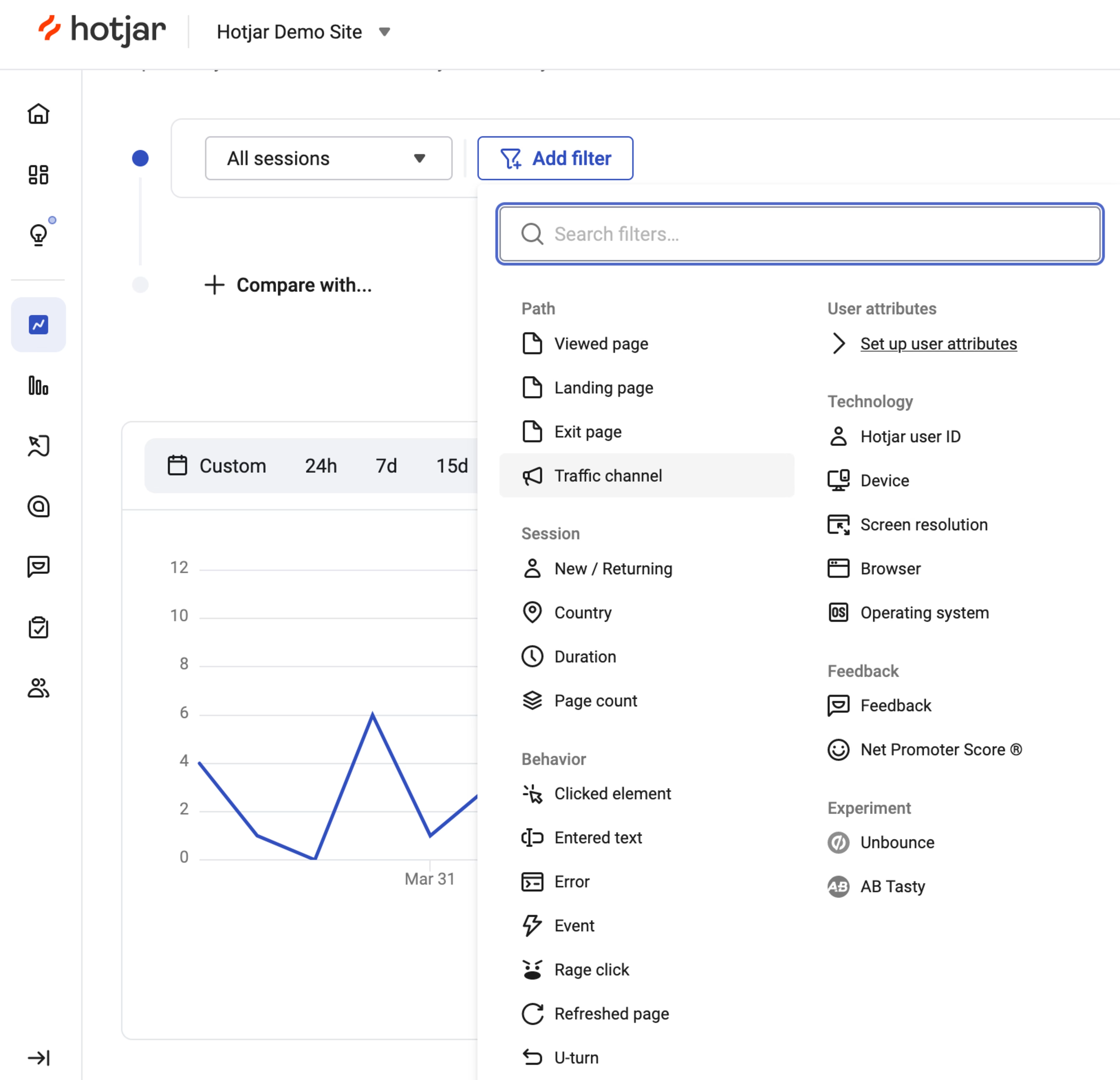
Apply advanced filters to create custom segments from any Hotjar-powered tool
Some popular use cases to get more value from segmented customer data in Hotjar:
Use Funnels to compare segment performance
Visualize segment performance in Dashboards
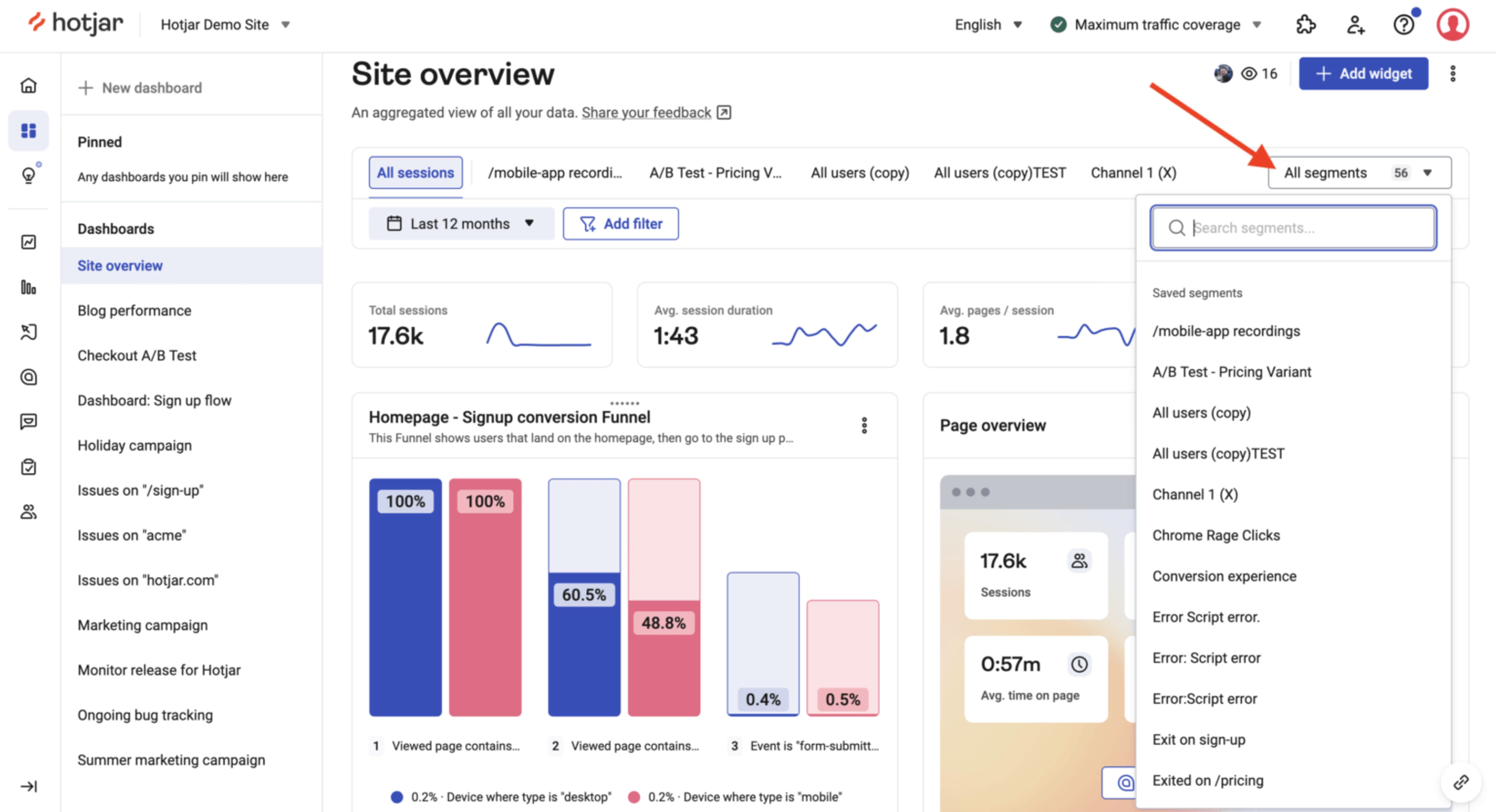
Click to toggle insights between segments in Hotjar Dashboards
Identify needs-based and psychographic segments with Surveys
Target interviews to customers who match valuable segments using Hotjar Engage
You can also combine segment data with third-party tools to identify the ‘why’ behind any segment pattern—for example, pull in your Google Analytics segments and compare a heatmap of customers who signed up for your product vs. those who bounced.
3. Heap
Heap, part of the Contentsquare group, is a digital insights platform for user data analysis.
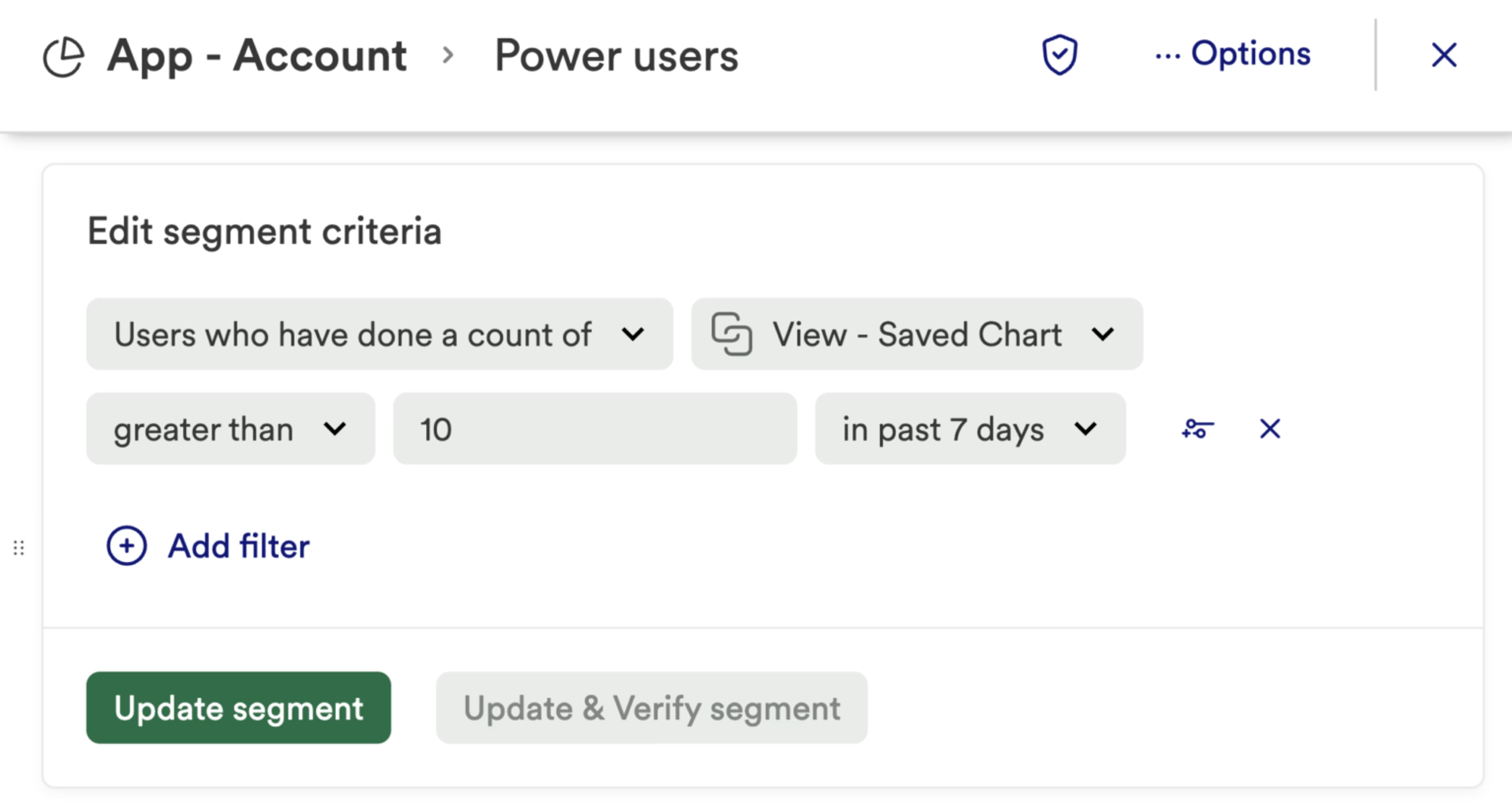
Creating a segment for power users in Heap
You can use customer segmentation in Heap to
Create behavior-driven segments: create user cohorts based on user actions and events on your site or in-app, such as frequent buyers or product usage over time
Perform segmentation analysis: build dashboards around valuable segments
Merge segment data with third-party tools: for example, combine Salesforce data with Heap to track high-value users from first touch through to adoption
Pro tip: download Heap’s free segment planning template to get started by defining your segmentation strategy and customer segmentation process.
See it in action
PocketSuite, a client booking app, used Heap to analyze in-product behavior and apply needs-based segmentation to customers, dividing them into users who wanted to get started quickly vs. users who needed onboarding assistance. Segmenting by behavior helped the team optimize the onboarding flow and identify a key user activation metric—processing $1,000 in payments through the app—that helped decrease paid user churn by 30%.
4. Google Analytics
Google Analytics, part of the Google Marketing Platform, is a freemium website analytics tool. You can use the current version, GA4, for free with sampling limits, or as part of the premium Google Analytics 360 suite.
GA4 lets you create three main types of segments:
User segments: segment user data based on user actions or attributes, like people who browse from Canada on a mobile device
Session segments: segment session data to only include chosen events, like making a purchase
Event segments: segment data based on a specific interaction or occurrence, like users who view a sign-up page
Create segments in GA4 in two ways:
Create a suggested segment: apply pre-made and predictive segments, like ‘predicted 28-day top spenders’ and ‘likely 7-day churning purchasers’
Build a custom segment: use the segment builder tool to create segments based on any combination of users, sessions and events
Get more from Google Analytics segments: Contentsquare’s Live Signals integration sends additional user behavior signals, like rage-clicking or repeated scrolling, to GA4 in real time so you can quickly identify areas of friction.
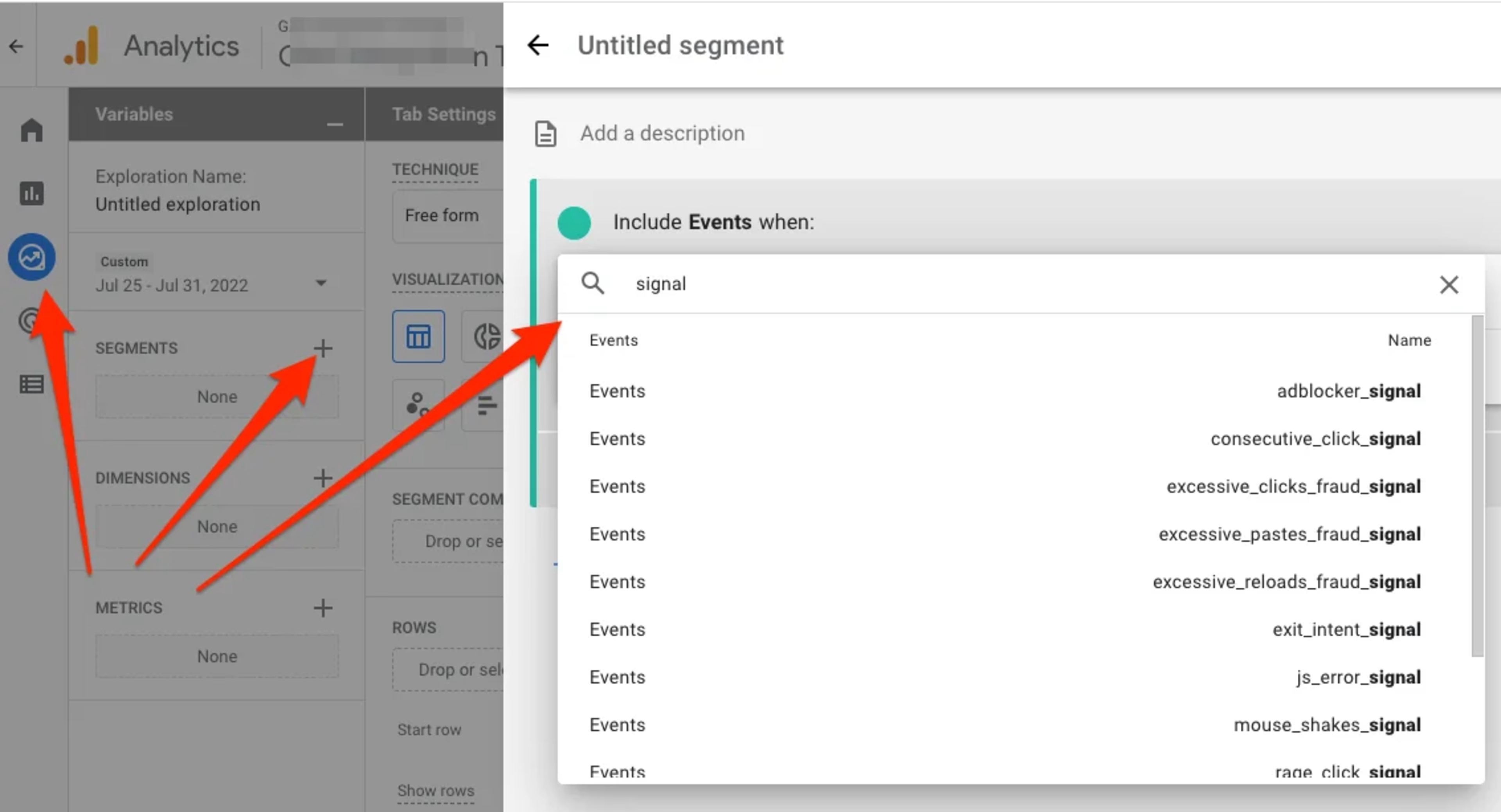
Building a GA4 segment using Contentsquare events
5. Mixpanel
Mixpanel is a product analytics software for mobile and web apps. Since it tracks every interaction between customers and your product, you can use it to visualize customer segments and understand more about what drives product usage and customer retention.
Use Mixpanel to segment your product data by
Viewing reports: based on metrics and single or multi-step behaviors
Filtering data by event: for example, completing the sign-up process
Filtering data by cohort: for example, new users from the US
Creating custom buckets: group existing properties into meaningful segments, for example, to compare how many sign-ups are brought in by organic search vs. Google ads
Pulling in third-party segment data: for example, using a customer data platform like Twilio Segment
You can achieve similar product data collection in analytics tools like Baremetrics or ChartMogul.
Get more from Mixpanel segments: add qualitative insights to your segments with Contentsquare’s Mixpanel integration. Click to view individual session replays directly from Mixpanel dashboards to identify and prioritize the issues that have the greatest impact on your customer experience (CX) and revenue.
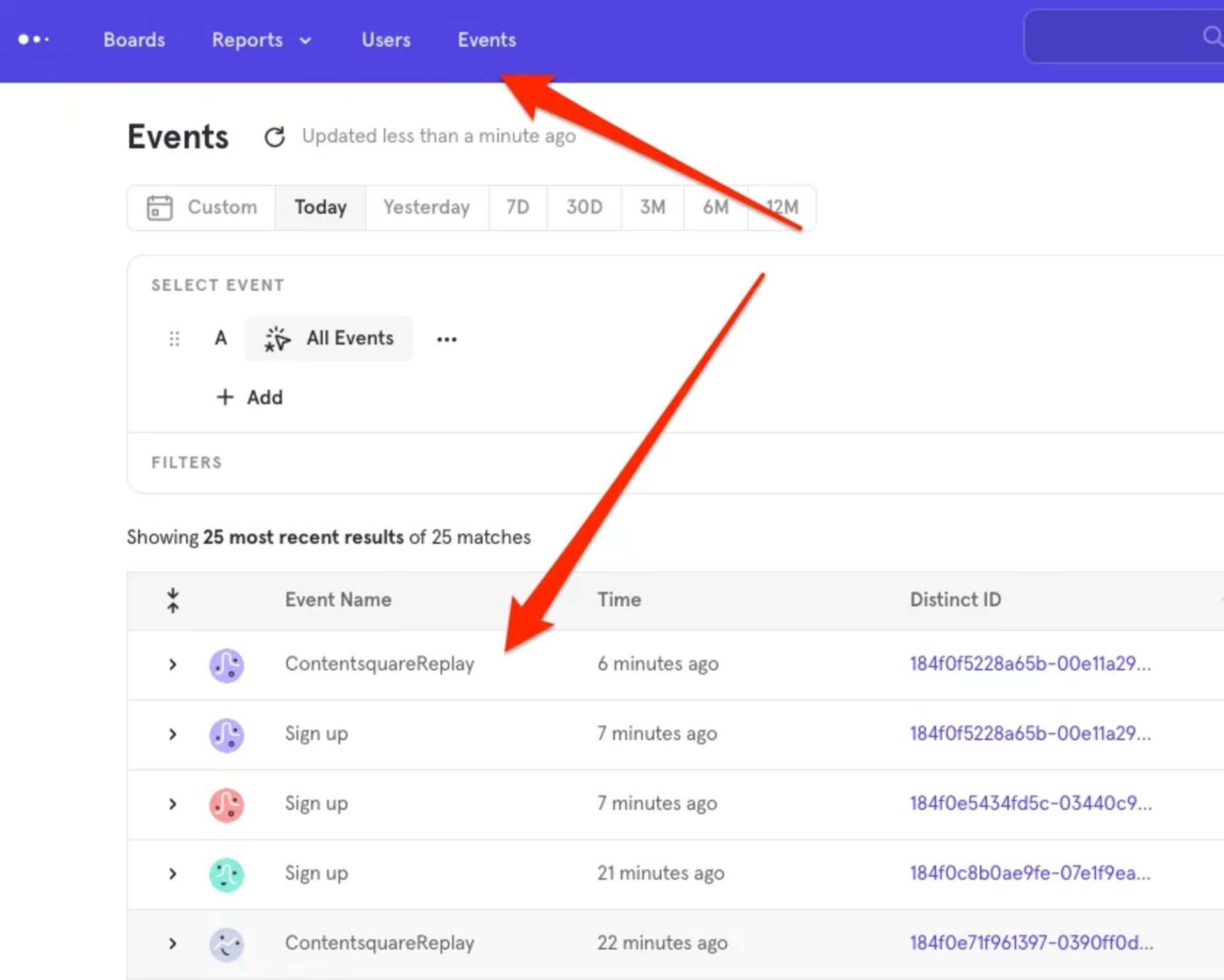
Viewing Contentsquare session replays as events in Mixpanel
6. Qualtrics XM
Qualtrics XM is advanced experience management software that captures event data points across customer, product, employee and brand experiences.
Use Qualtrics XM to segment customer data by
Creating custom segments: segment by demographics, needs, priorities, common interests, and other psychographic or behavioral criteria for targeted campaigns
Targeting segments with feedback: divide contacts into dynamic groups to target web and mobile feedback
Applying custom filters: filter contacts by activity and survey response, for example by your Net Promoter Score®
Using AI-powered segments: automatically group customers into segments, like teams, geographies and industries—useful for firmographic segmentation if you’re a B2B SaaS company
Get the context behind Qualtrics XM segments with Contentsquare: use Contentsquare’s Qualtrics integration to visualize what happened before, during and after a customer leaves feedback.
See the exact issue they experienced by viewing relevant session replays directly from the Qualtrics XM platform. Quantify how many other customers experienced the same problem, even if they never left feedback.
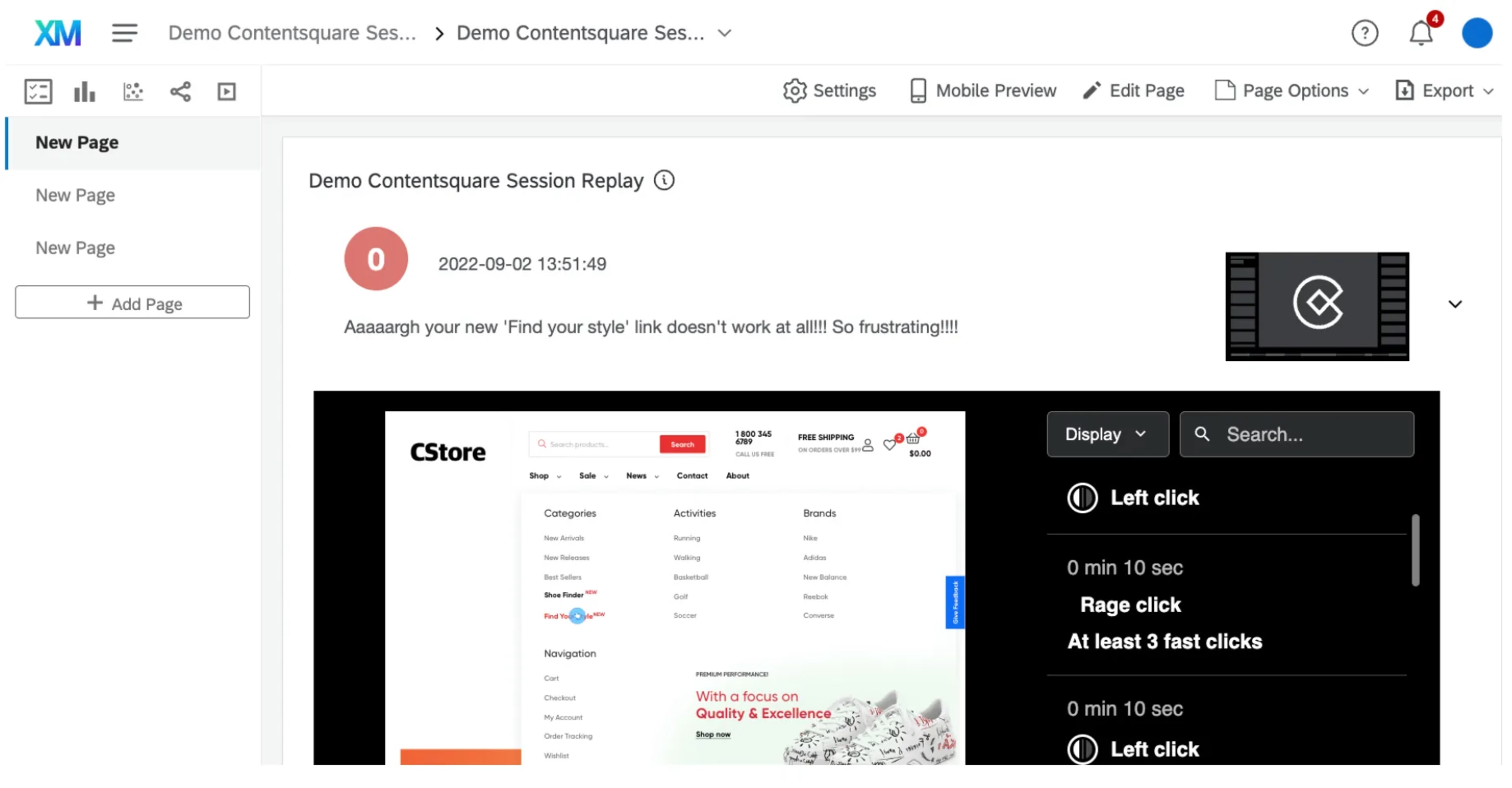
View session replays directly from Qualtrics XD by integrating with Contentsquare
7. Monetate
Monetate is a personalization platform that enables product and eCommerce teams to improve CX by delivering content segmentation to website visitors.
Unlike most of the other market segmentation solutions in this list, Monetate focuses on target audience segmentation before the point of conversion and A/B testing to improve conversion rates.
You can categorize users in Monetate by
Behavioral segmentation: based on previous session behavior, like adding an item to cart
Demographic segmentation: for US visitors only, based on data from the 2020 US Census
Geographic segmentation: including distance from a location, such as your physical store
Technographic segmentation: like browser capabilities or device type
Needs-based segmentation: including current weather conditions from the National Weather Service
Pro tip: You can also add custom segmentation attributes to Monetate by integrating with third-party tools. For example, Contentsquare’s Monetate integration lets you
Visualize user experience data, like session replays and heatmaps, to see why content works well (or doesn’t) for key segments
Send Live Signals attributes, like Ad blocker use or exit intent, to Monetate to improve customer engagement
8. HubSpot
HubSpot is an all-in-one customer platform and CRM that covers marketing, sales, social media and customer service.
HubSpot’s most popular segmenting feature is List Segmentation, part of the Marketing Hub, which allows you to
Create and segment contact-based and company-based lists
Automate email campaigns and send personalized marketing messages at scale
Segment lists based on a wide variety of criteria, including age, most recent content download and expected deal size
You can achieve similar marketing automation in email marketing tools like Mailchimp or Zoho CRM.
Enhance your HubSpot segments with Hotjar: Enrich your HubSpot contacts and leads with Hotjar’s HubSpot-certified integration. Use it to view session recordings and survey responses in your HubSpot timeline to see the _wh_y behind customer or lead behavior. Segment lists based on Hotjar session properties like rage click or exit page to trigger hyper-relevant marketing flows.
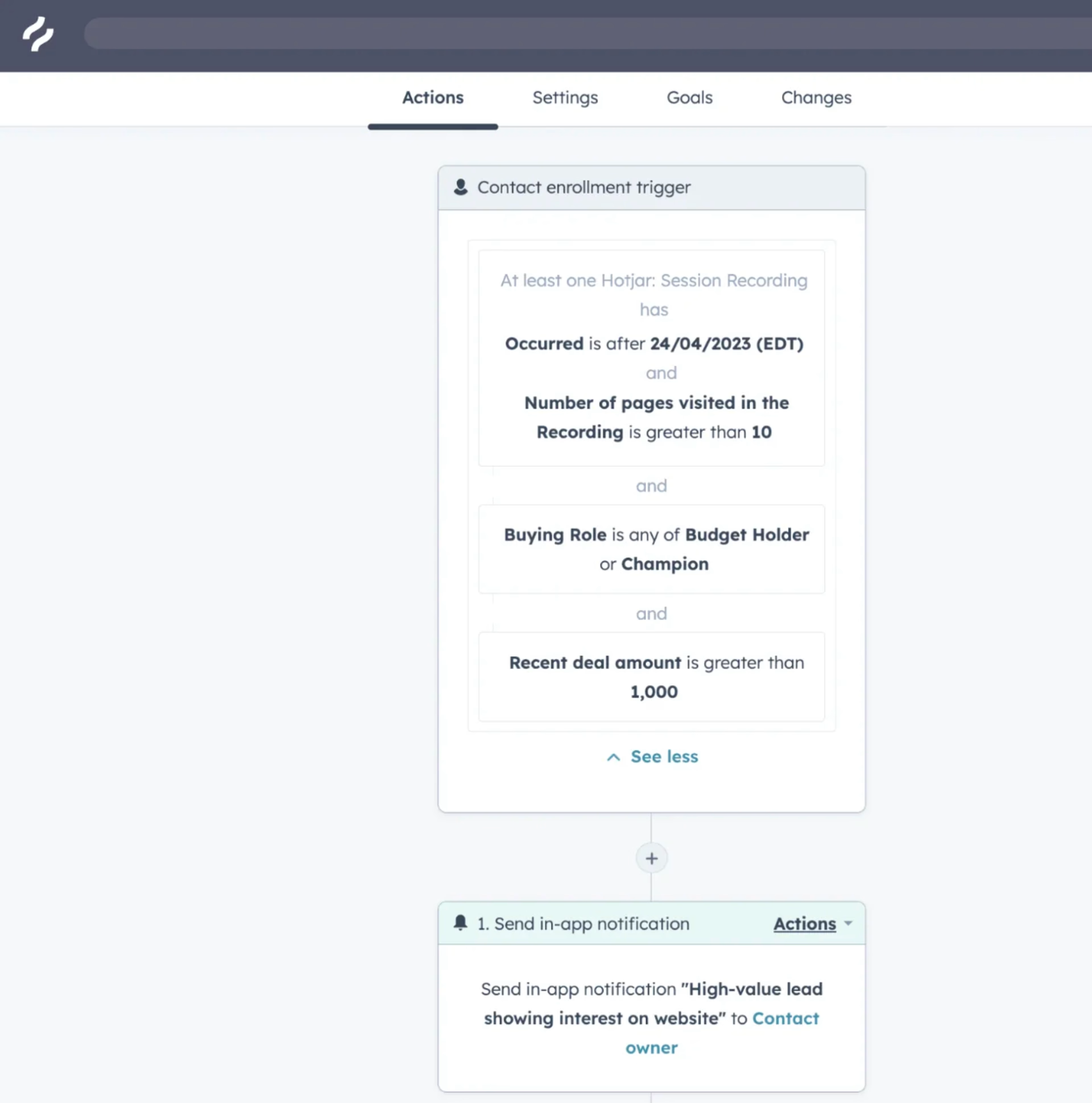
Using Hotjar session properties to build workflows in HubSpot
Customer segmentation is about more than metrics
It’s easy to get lost in the analytics side of customer segmentation if you only focus on business metrics like revenue or conversion rate. Segmentation is really all about getting to know your customers as people: real-life individuals with unique needs, goals and reasons to choose you over your competitors.
That’s why the best customer segmentation solution(s) for your business should combine quantitative analytics with customer behavior insights. That way, you’ll have the business intelligence data you need to optimize for KPIs while serving competition-beating user-friendly experiences to your customer base.
